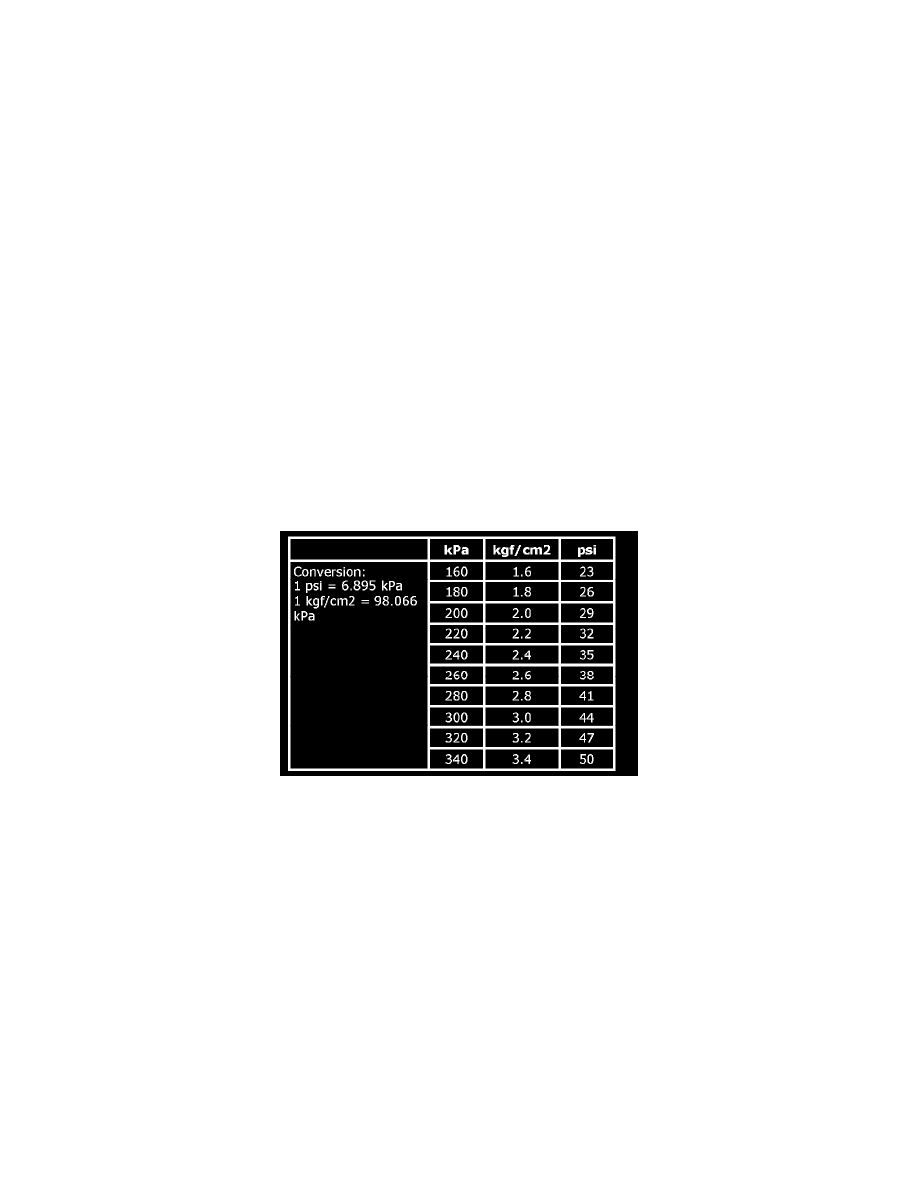Grand Vitara 4WD L4-2.4L (2009)

^
Tire inflation pressure should be checked when tires are cool.
^
The tire inflation pressure will change due to changes in atmospheric pressure, temperature or tire temperature when driving. To reduce the
chance that the low tire pressure warning light will come on due to normal changes in temperature and atmospheric pressure, it is important to
check and adjust the tire pressures when the tires are cold. Tires that appear to be at the specified pressure when checked after driving, when
the tires are warm, could have pressure below the specification when the tires cool down. Also, tires that are inflated to the specified pressure
in a warm garage may have pressure below the specification when the vehicle is driven outside in very cold temperature. If you adjust the tire
pressure in a garage that is warmer than the outside temperature, you should add 1 psi to the recommended cold tire inflation pressure for every
10 degrees F difference between garage temperature and outside temperature.
^
Specified tire inflation pressure should be found on tire placard or in owner's manual which came with the vehicle.
The tires are of tubeless type. The tires are designed to operate satisfactorily with loads up to the full rated load capacity when inflated to the
recommended inflation pressure. Correct tire pressures and driving habits have an important influence on tire life. Heavy cornering, excessively rapid
acceleration, and unnecessary sharp braking increase tire wear.
Replacement Tires Description
Replacement Tires Description
WARNING:
Do not mix different types of tires on the same vehicle such as radial, bias and bias belted tires except in emergencies, because vehicle
handling may be seriously affected and may result in loss of control.
When replacement is necessary, the original equipment type tire should be used. Refer to the Tire Placard. Replacement tires should be of the same
size, load range and construction as those originally on the vehicle. Use of any other size or type tire may affect ride, handling, speedometer /
odometer calibration, vehicle ground clearance and tire or snow chain clearance to the body and chassis.
It is recommended that new tires be installed in pairs on the same axle. If necessary to replace only one tire, it should be paired with the tire having the
most tread, to equalize braking traction. The metric term for tire inflation pressure is the kilopascal (kPa). Tire pressures will usually be printed in both
kPa and psi on the Tire Placard. Metric tire gauges are available from tool suppliers. The chart, below table, converts commonly used inflation
pressures from kPa to psi.
Inflation of Tires Description
Inflation of Tires Description
The pressure recommended for any model is carefully calculated to give a satisfactory ride, stability, steering, tread wear, tire life and resistance to
bruises.
Tire pressure, with tires cold, (after vehicle has set for 3 hours or more, or driven less than one mile) should be checked monthly or before any
extended trip. Set to the specifications on the tire placard located on the side of instrument panel.
It is normal for tire pressure increase when the tires become hot during driving. Do not bleed or reduce tire pressure after driving. Bleeding reduces
the "Cold Inflation Pressure."
NOTE:
Valve caps should be kept on valves to keep dust and water out.
Higher than recommended pressure can cause:
^
Hard ride
^
Tire bruising or carcass damage
^
Rapid tread wear at center of tire
Unequal pressure on same axle can cause:
^
Uneven braking
^
Steering lead
